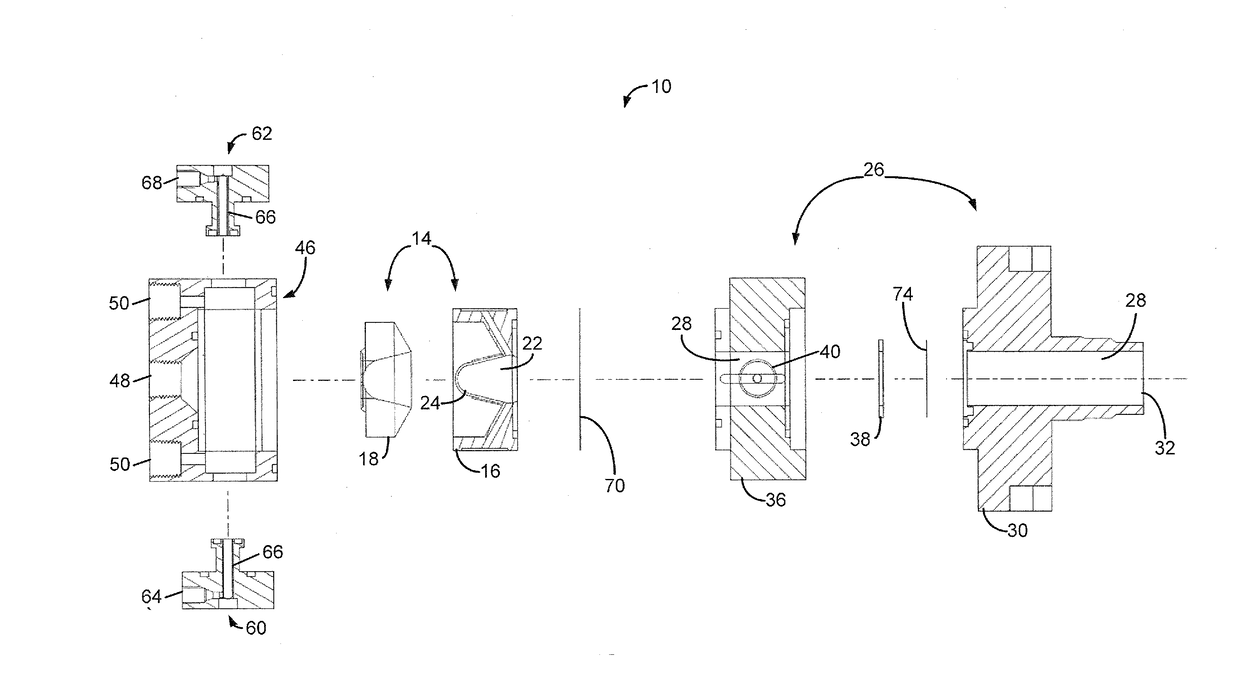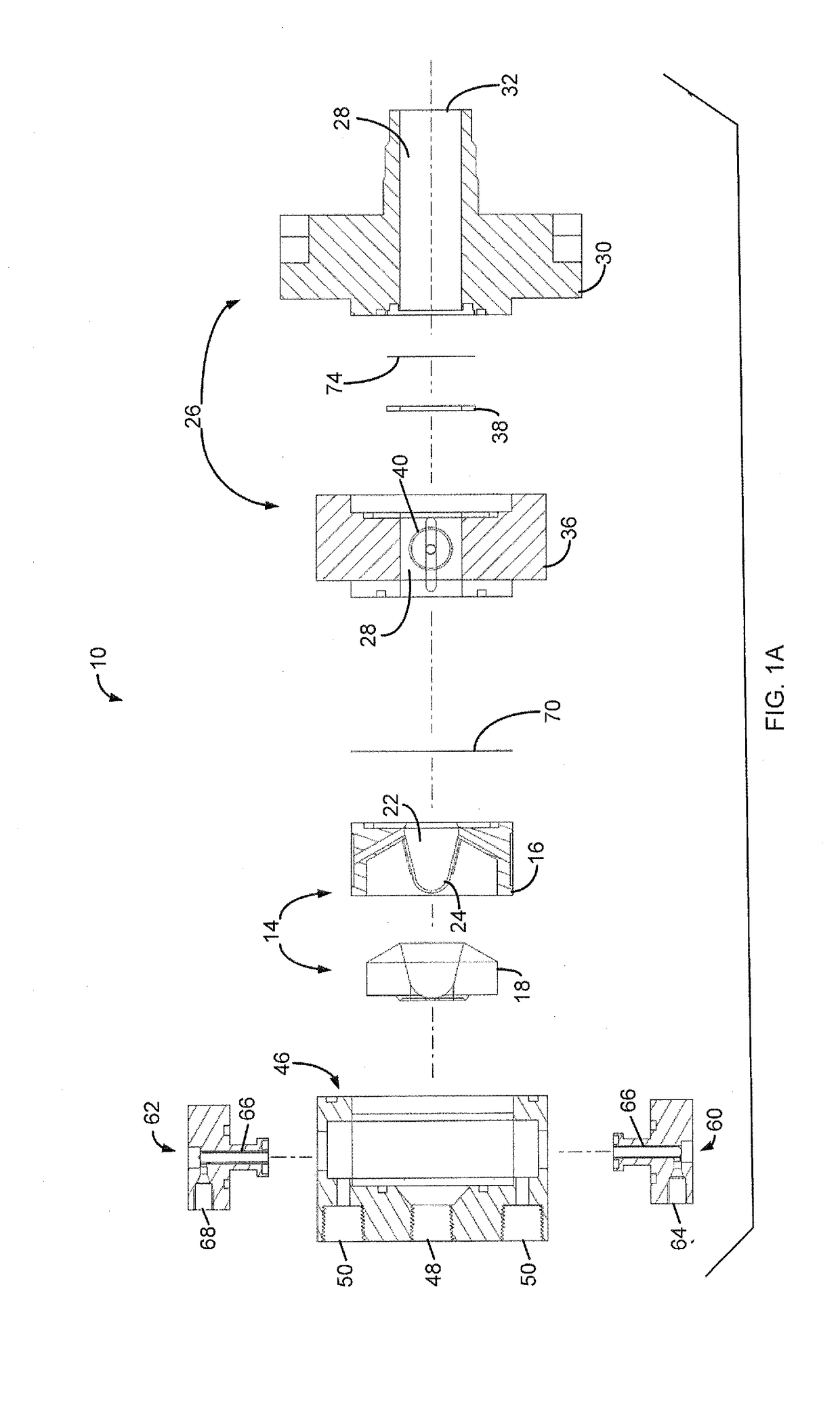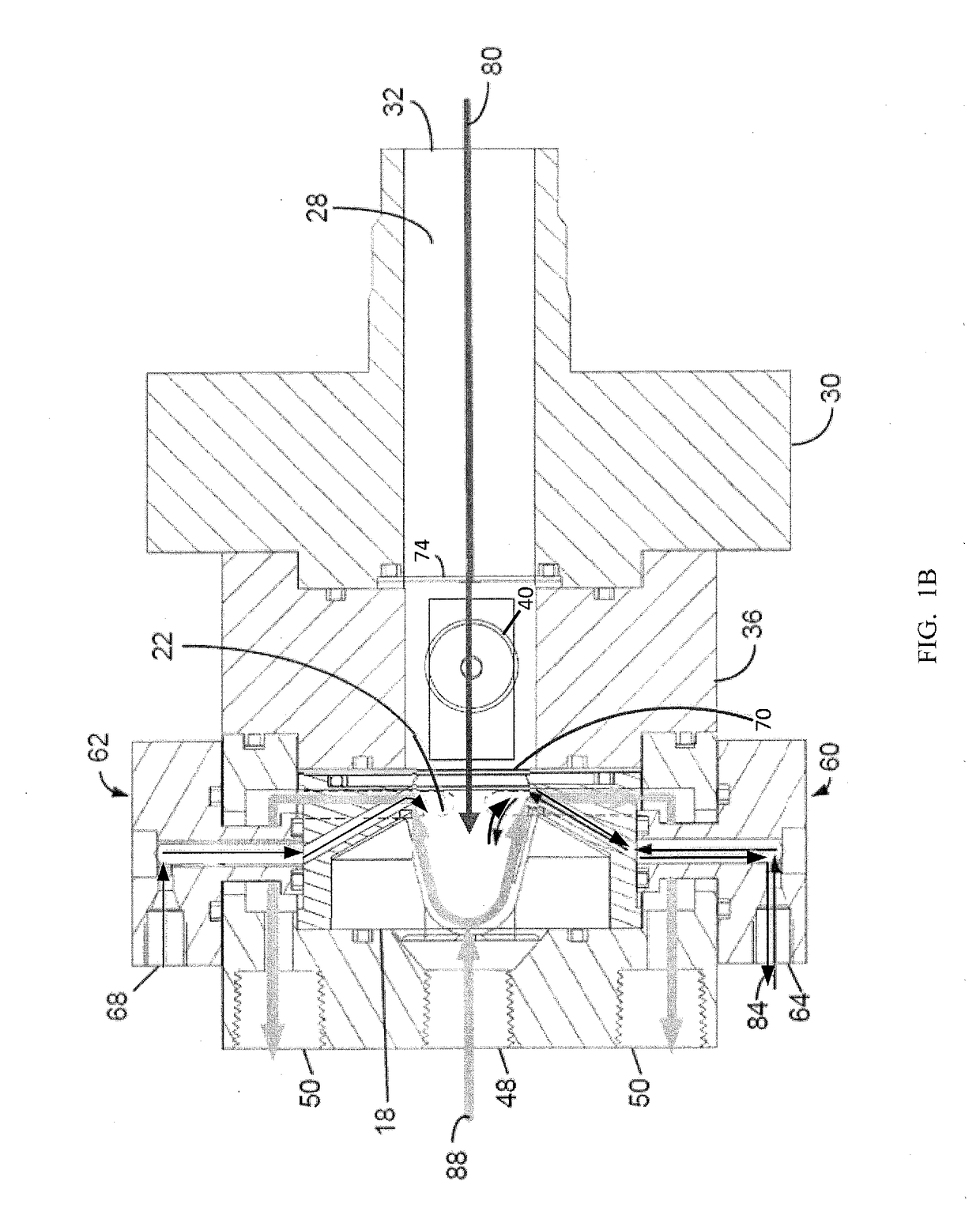Solution target for cyclotron production of radiometals
a radiometal and cyclotron technology, applied in the field of labeled radiopharmaceuticals, can solve the problems of inefficient and long separation step of solid target methods, and achieve the effects of improving thermal transfer characteristics, maximizing heat transfer, and improving heat transfer characteristics
- Summary
- Abstract
- Description
- Claims
- Application Information
AI Technical Summary
Benefits of technology
Problems solved by technology
Method used
Image
Examples
example 1
Conclusions for Example 1
[0070]A solution target approach for production and automated separation of 68Ga was successfully developed employing a solution of 68Zn nitrate in 0.2 N nitric acid. The production yield was found to be 192.5±11.0 MBq / μA·h decay-corrected to EOB with a specific activity in the range 5.20-6.27 GBq / μg. Radiochemical and radionuclidic purities were both >99.9%. Increasing the target solution concentration of 68Zn and irradiation time may further increase the production yield. The isotope separation method employed AG 50W-X8 resin eluted with a solution of 0.5 N HBr in 80% acetone to remove the zinc isotopes, followed by elution of 68Ga in 3 N HCl. The new target design with reduced target volume (1.6 mL) and enhanced heat transfer allowed irradiation as a closed system. Gallium-68 can, therefore, be produced on a low energy cyclotron in sufficient quantities to provide a viable alternative to the 68Ge / 68Ga generator for those facilities that have an on-site cy...
example 2
Conclusion for Example 2
[0103]In summary, a solution target approach for production of 89Zr was successfully developed. The major obstacles in implementing a solution target for 89Zr production were identified as gas evolution due to radiation-induced water decomposition and in-target precipitation of salts. Gas evolution followed a consistent trend across Groups 1-3 metals, however, disparate interactions between the metal cations and anions (chloride versus nitrate) were observed. Gas evolution can be minimized significantly by addition of nitric acid and use of nitrate salts. The present study of Example 2 provides foundational information on the design and development of solution targets, and should be applicable for production of other radiometals such as 68Ga, 64Cu, 63Zn, 86Y, 61Cu, 99mTc, 45Ti, 13N, 52Mn, or 44Sc. Applications for use of the radiometals include, without limitation, labeling of diagnostic and therapeutic compounds for medical purposes.
example 3
[0104]Example 3 describes the production of 13N-ammonia with a solution target. For production of 13N-ammonia, the solution target was configured with a standard Havar® cobalt alloy window foil (40 μm thickness) without a degrader foil or helium cooling. The target was loaded with 1.6 mL 50 μM EtOH in deionized water and pressurized to 90 psi. The target was irradiated with 16.5 MeV protons (GE PETtrace) for 15 minutes at 35 μA beam current. Target pressure was stable during the run at ˜133 psi. The target liquid was unloaded to a hot cell, passing through a sterile filter (0.2 m) before collection in a product vial. The amount of 13N-ammonia produced was 513±29 mCi uncorrected for decay. The conventional silver target used for 13N-ammonia production yields approximately 330 mCi under the same irradiation conditions, however, in this case, the target is rinsed once with nonradioactive water to increase the transfer of the 13N-ammonia produced. Undesirable release of volatile 13N-lab...
PUM
| Property | Measurement | Unit |
|---|---|---|
| Force | aaaaa | aaaaa |
| Energy | aaaaa | aaaaa |
| Energy | aaaaa | aaaaa |
Abstract
Description
Claims
Application Information
 Login to View More
Login to View More - R&D
- Intellectual Property
- Life Sciences
- Materials
- Tech Scout
- Unparalleled Data Quality
- Higher Quality Content
- 60% Fewer Hallucinations
Browse by: Latest US Patents, China's latest patents, Technical Efficacy Thesaurus, Application Domain, Technology Topic, Popular Technical Reports.
© 2025 PatSnap. All rights reserved.Legal|Privacy policy|Modern Slavery Act Transparency Statement|Sitemap|About US| Contact US: help@patsnap.com



